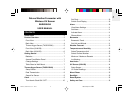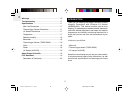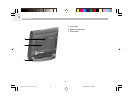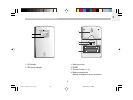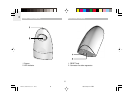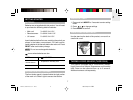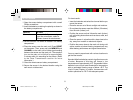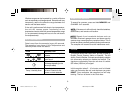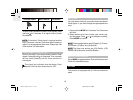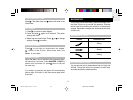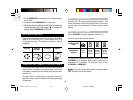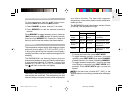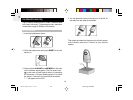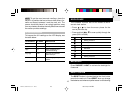
EN
8
SWITCH OPTION
Channel
Channel 1 - 3. If you are using
more than one sensor, select a
different channel for each sensor.
SETUP SENSOR
1.Open the sensor battery compartment with a small
Phillips screwdriver.
2. Insert the batteries, matching the polarity as shown in
the battery compartment.
3.Set the channel. The switch is located in the battery
compartment.
4.Place the sensor near the main unit. Press RESET
on the sensor. Then, press and hold MEMORY and
CHANNEL on the main unit to initiate signal sending
between the sensor and the main unit. The reception
icon on the main unit will blink for approximately
3 minutes while it is searching for the sensor. (Refer
to the Data Transmission section for more
information.)
5.Close the remote sensor battery compartment.
6.Secure the sensor in the desired location using the
wall mount or table stand.
For best results:
• Insert the batteries and select the channel before you
mount the sensor.
• Place the sensor out of direct sunlight and moisture.
• Do not place the sensor more than 98 feet (30 meters)
from the main (indoor) unit.
• Position the sensor so that it faces the main (indoor)
unit, minimizing obstructions such as doors, walls, and
furniture.
• Place the sensor in a location with a clear view to the
sky, away from metallic or electronic objects.
• Position the sensor close to the main unit during cold
winter months as below-freezing temperatures may
affect battery performance and signal transmission.
You may need to experiment with various locations to
get the best results.
Standard Alkaline batteries contain signifcant amounts
of water. Because of this they will freeze in low
temperatures of approximately 10°F. Disposable Lithium
batteries have a much lower threshold for temperature
with an estimated freezing range of below -40°F. The
Liquid Crystal Display in outdoor thermometers will
remain operational to -20°F with adequate power.
BAR609HGAmanual-ENG 05/1/18, 7:11 PM8




